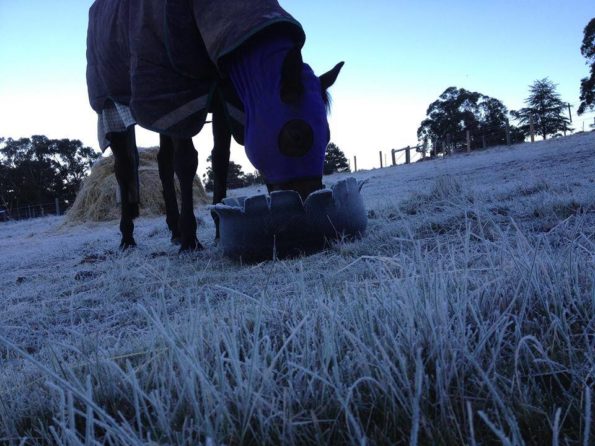
By Meaghan Sutherland AVN, RVN, DipVN (ECC & Surg)
Whilst we rely heavily on feacal egg counts to determine worm burdens in horses throughout the year, at this time of year there are two specific internal parasites that we need to focus on, Bots and Tapeworms. Bot flys are prevalent in late summer laying eggs on horses legs. When horses scratch these off where do they end up? To start with they end up in the horses mouth, where they develop into larva. These larva are then swallowed, and end up in the horses stomach. This process takes roughly 3 months and any treatment prior to the larvae ending up in the stomach is not effective. Tapeworms also have a long lifecycle and require treatment at this time of year. Both of these parasites are treated after the first frost, which naturally kills off larvae on the pasture. But how do you know if you need to treat for different species of parasites including small strongyles/ large strongyles and ascarids’.
With a large range of deworming products available horse owners are faced with a maze of deworming treatments, all offering to treat various types of internal parasites. The number of active ingredients within deworming products also varies. So is using multiple drugs routinely an effective solution? The answer is NO. If you continue to treat with multiple drugs on a calendar based schedule you could be creating resistance to not one but many of these active ingredients. What is resistance? Resistance is a parasites ability to survive despite the host animal being treated with a deworming product.
So how do you know when and with what you should deworm your equine friend? The answer faecal egg counts (FEC). Autumn is an important season in which all horse owners should check their horses faecal egg burden prior to any deworming treatment, to ensure the correct product is used. This is done by collecting three pinches from freshly passed faecal balls, placing the sample in a sealed container and refrigerating until it is able to be taken to the clinic. Refrigeration prevents the eggs within the faeces hatching and hatching will reduce the egg count and give you a false reading as to the estimated adult worm burden your horse has. The sample is then sent off to have a FEC performed. The sample must remain refrigerated/ chilled until it reaches the vet/ lab. Freezing will damage eggs present and result in a false negative result.
As discussed above the end of Autumn, or after the first frost (whichever comes first) is the ideal time to treat for Bots and Tapeworms. The decision on which dewormer is used is based on the products you have used previously, and the quantity and species of eggs present. So to ensure that you are only treating your horse when worms are present, with the correct wormer, do a FEC, you may find that you don’t need to deworm at all!
Watch the videos below on faecal sample collection and storage.


